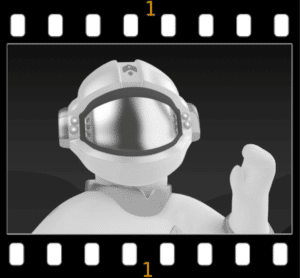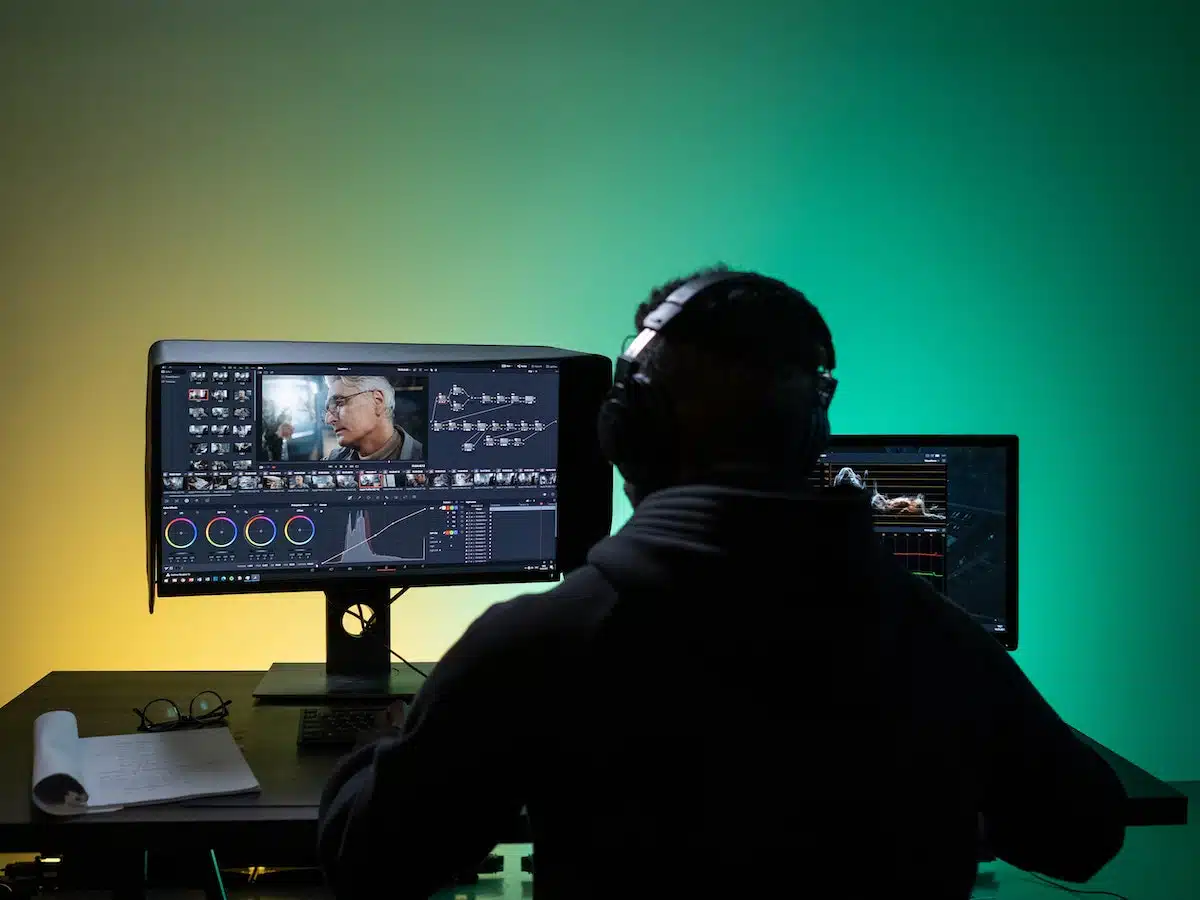The right aspect ratio can make your video content look its best. That’s why we’ve put together this complete video aspect ratio guide. This guide includes all the common aspect ratios for everything from making an OTT commercial to sharing video on social media.
Simply put, aspect ratio is the relation between the width of an image and its height. You’ll see this written as two numbers separated by a colon, like this: 16:9. If the first number is the largest, you’re dealing with a horizontal image. If the second number is larger, your image is vertical.
Don’t confuse aspect ratio with image size. Image size is the width and height of an image, but aspect ratio is the relationship between those numbers.
Why Are There So Many Aspect Ratios?
Different display sizes require different aspect ratios. Back in the days before flat-screen televisions, 4:3 was the most common aspect ratio. This was based on the shape of a standard strip of 35mm film.
In the 1950s, widescreen travel films showed audiences a panoramic view in 2:35 for the first time. Soon, 20th Century Fox developed a special lens, called a Cinemascope to deliver ultra widescreen. It stretched the image to achieve an even wider view. Widescreen aspect ratios were spectacular, but the resolution wasn’t great.

Aspect Ratio and Resolution
When you stretch a 4:3 image, the grain of the film gets bigger. It’s just like blowing up a photo to hang on your wall, you’ll start to see pixels. So unless you’re okay with distortion, you need to increase resolution to make up for the broader ratio. The switch to digital media and HD TVs mostly solved this problem in the late 1980’s.
Starting around 1997, television transitioned from the 4:3 NTSC standard to a new 16:9 high resolution ATSC standard. The last NTSC transmitters shut down in 2018.
Standard Aspect Ratios for Broadcast, Cable and OTT
A commercial for airing on broadcast, cable, or OTT uses a 1920 x 1080 pixel format. That’s a 16:9 aspect ratio. The same is true if you’re uploading video to YouTube, Vimeo, or another online video sharing site.
But why is 16:9 video the standard aspect ratio for so many platforms?
It turns out 16:9 is the mathematical middle ground between traditional 4:3 and the 2:35 cinematic widescreen format. Modern TV screens are optimized for 16:9 and so are most computer monitors. That’s why YouTube and other video sites use it as their baseline. They want their content to look good whether it’s on your computer screen or streamed to your television.
But people don’t just watch videos on their televisions anymore. In fact, about 62% of viewers said they watch videos on mobile devices.
Common Aspect Ratios For Social Media Videos
Most people hold their phone vertically, so the 16:9 screen becomes a 9:16 screen. Social media platforms and other sites that rely on mobile users generally prefer this new aspect ratio. Some also accept a 1:1 ratio. This square format fits whether viewers hold the screen vertically or horizontally.
Best Video Aspect Ratios for Facebook
Facebook recommends these aspect ratios based on where the video will display.
In-feed – 1:1 or 4:5
Stories – 9:16
Video carousel – 1:1
In-Stream (ads during other videos) – 16:9
Audience Network – 9:16
Common Video Aspect Ratios for Instagram
Later, the social media post scheduling company, has a handy guide to Instagram photo and video posts. Instagram allows several aspect ratios, but these will give you the best results.
In-feed – 1:1
In-feed ads – 4:5
Stories – 9:16
Reels – 9:16
IGTV – 9:16
Aspect Ratios for Video on Twitter
Twitter sticks to three basic aspect ratios although the way they list them on their site can get a little confusing.
Promoted video – 1:1
Amplify Pre-roll or Sponsorship – 1:1 or 9:16
Promoted Live Video – 16:9
Video posts – 1:1 or 16:9
Aspect Ratios on Pinterest
Pinterest uses various formats depending on where your ad or pin will display.
Video Pins – 1:1, 2:3 or 9:16
Max Width ads – 1:1 or 16:9
Collections – 1:1, 2:3 or 9:16
Story Pins – 9:16
Choosing Aspect Ratios for TikTok
TikTok is the newest platform to include ad options. They keep things simple with three basic aspect ratios
Ads – 9:16, 1:1, or 16:9
Organic video – 9:16
One Standard Aspect Ratio for Snapchat
Snapchat has the simplest guidelines of all, with 9:16 across all ad and organic placements.
As you may have noticed, vertical video is increasingly popular on social media platforms. Dig deeper into how to use vertical video on social with our Vertical Video Guide.
How Video Sizes Might Change in the Future
Aspect ratio standards take their cues from technology. They change when the technology does. New display and recording technology leads to new aspect ratios to fit those formats.
Right now 16:9 and 9:16 are the most common aspect ratios. They seem like the obvious solution in a world full of smartphones. But if virtual reality becomes commonplace, aspect ratios may change to fit that format.
In the future people may experiment with wrap-around screens or vertical format televisions. Folding screens could become commonplace. Basically, anything could happen. To stay prepared, keep an eye on the latest display technology and create videos to fit it.
How To Get The Right Size Every Time
To make sure your video is perfectly sized every time, first, think about where you’ll be placing it. Then, create your video in that aspect ratio. This is easier, and more professional-looking, than making a video and modifying it to fit.
For help planning videos that fit any platform, work with the experts at IdeaRocket. We create videos in 2d and 3d animation, whiteboard animation, and live action. Our clients use their videos to explain tech products and services, to support healthcare, to communicate with employees or to advertise on television, and more. Contact us today to learn more.



